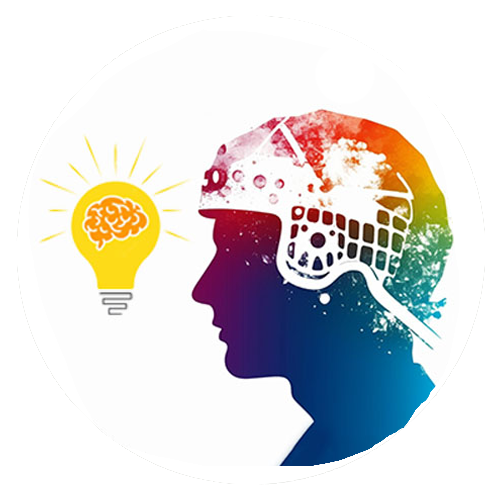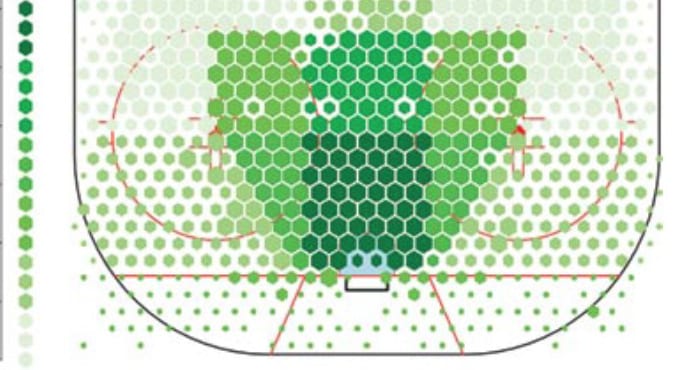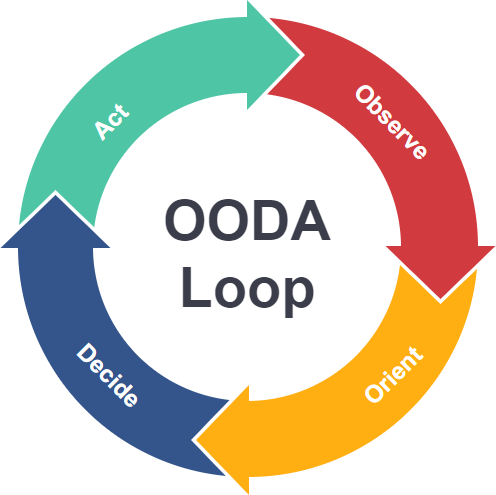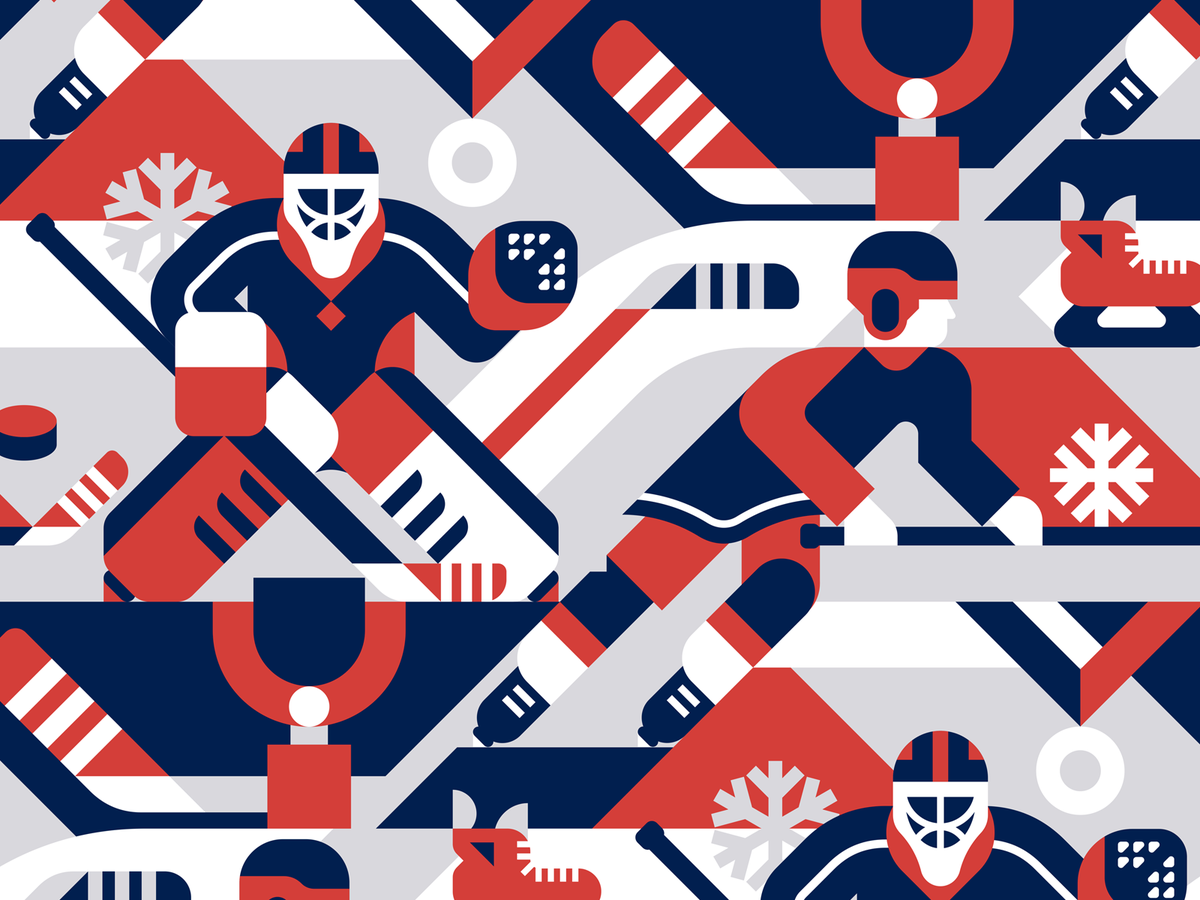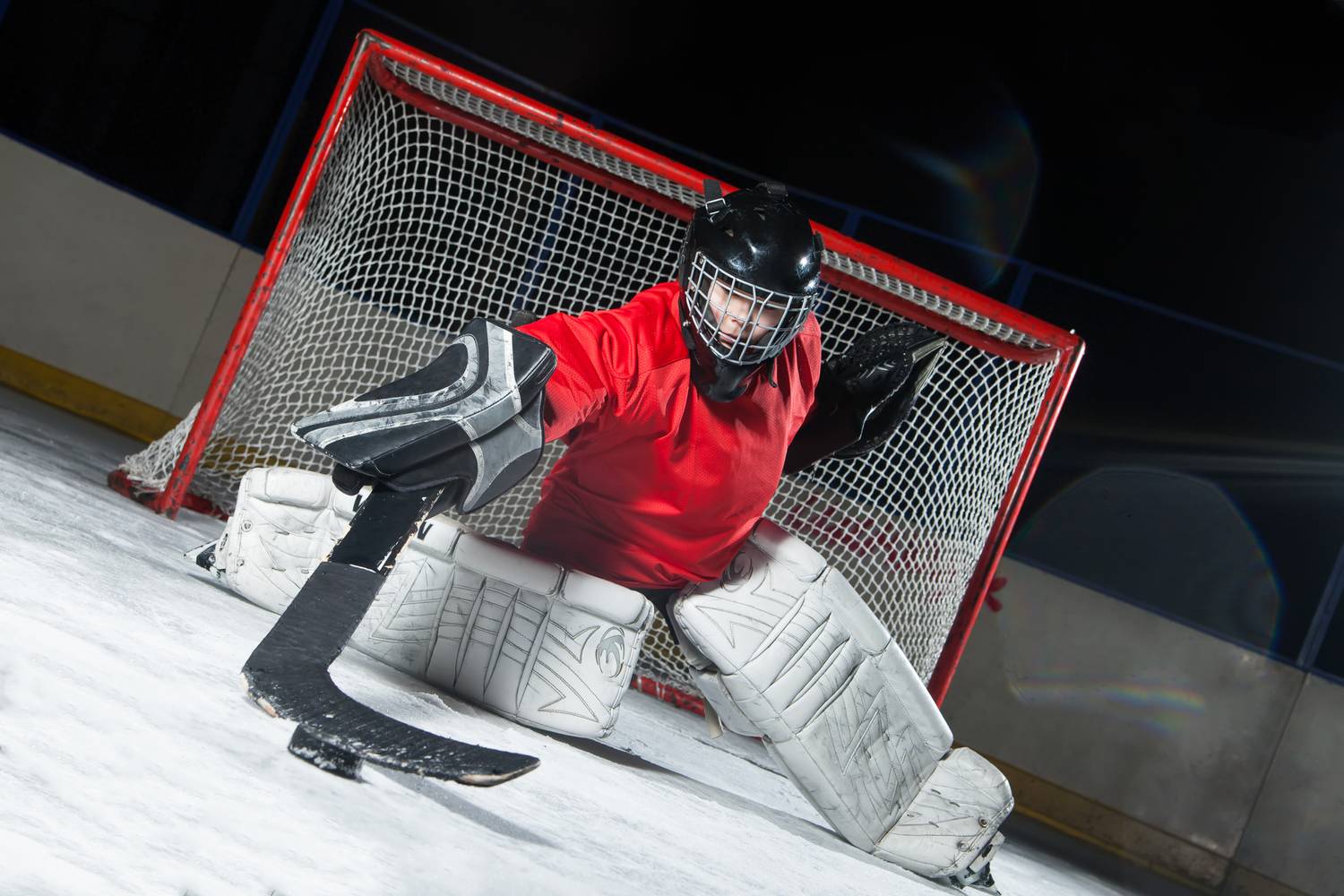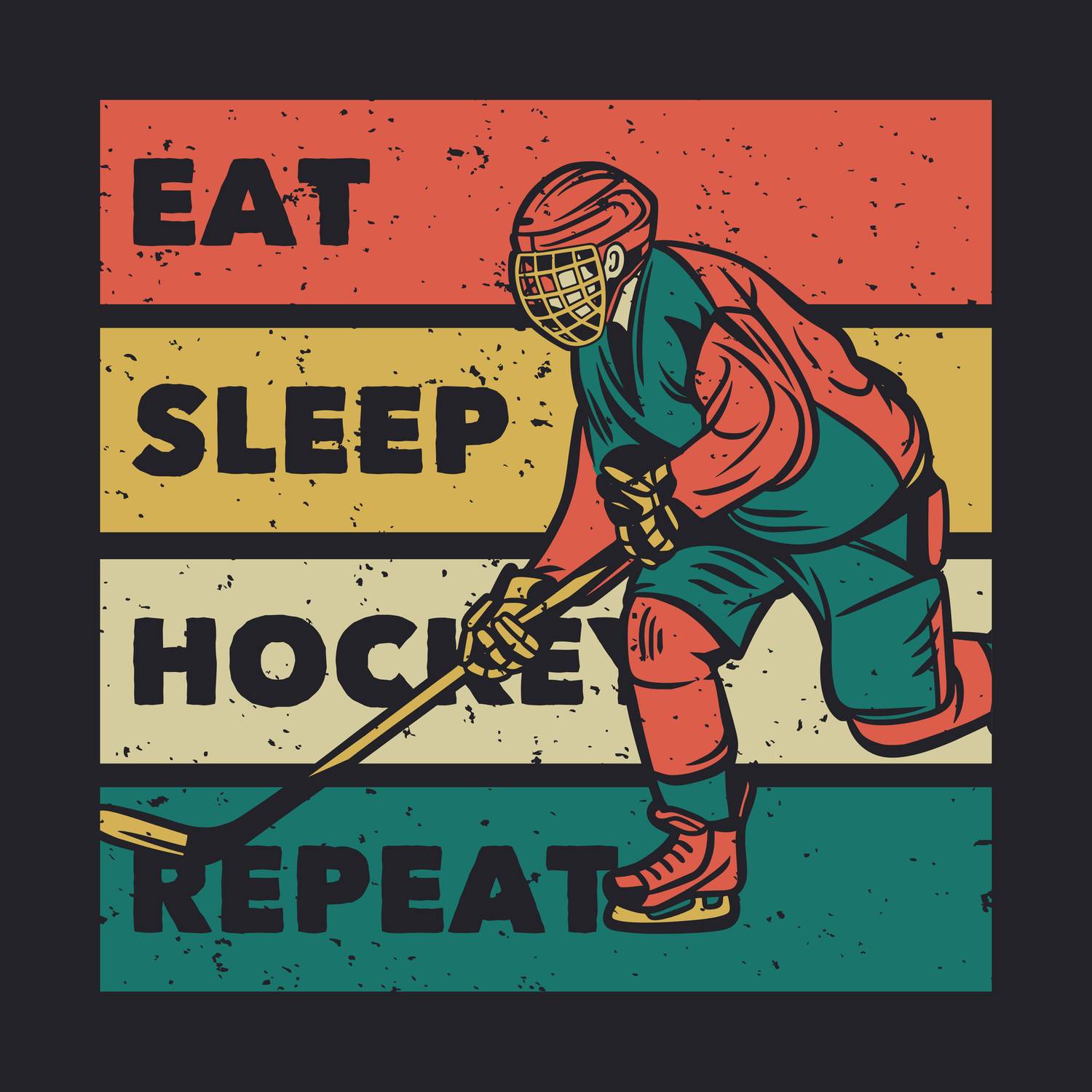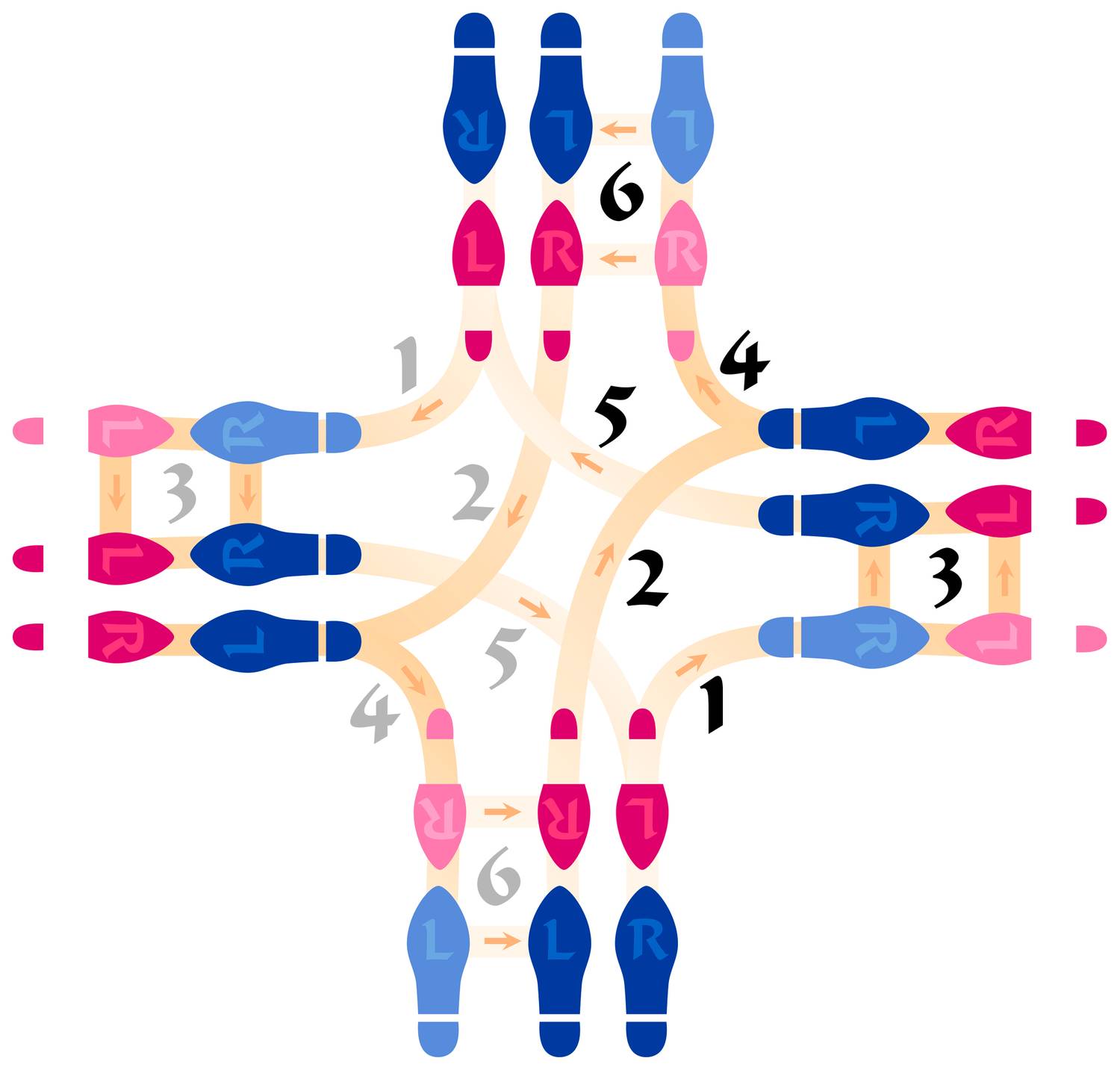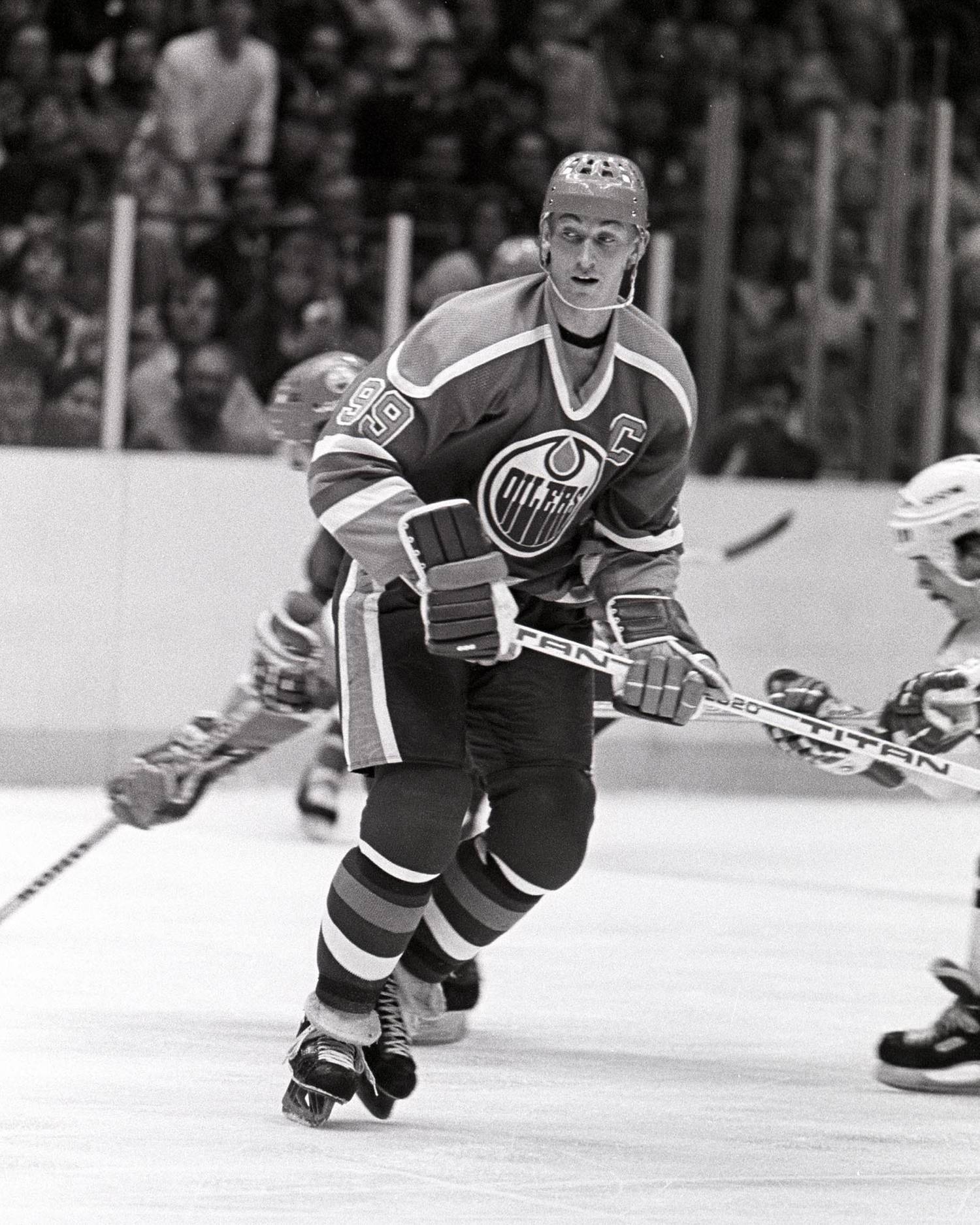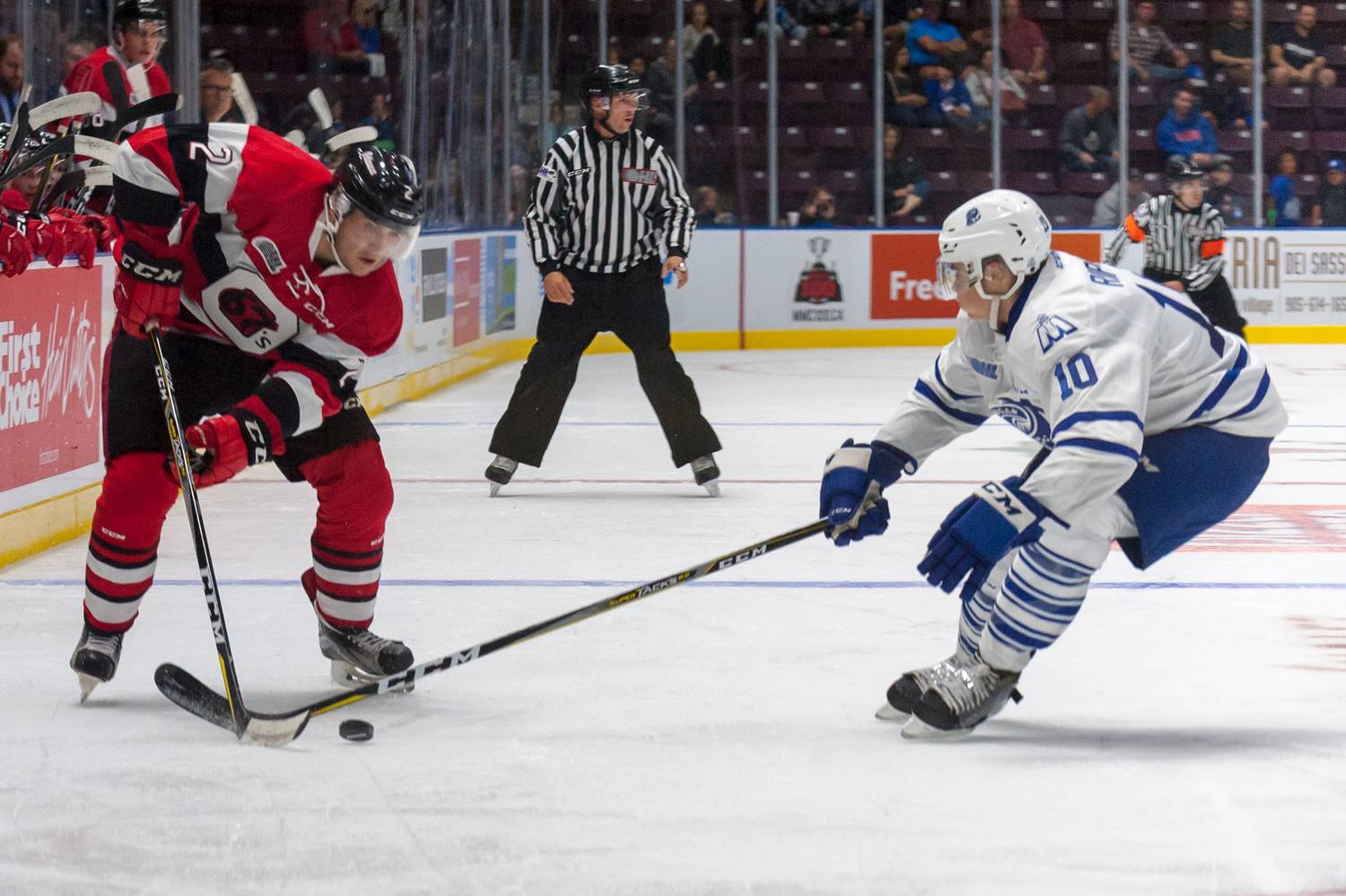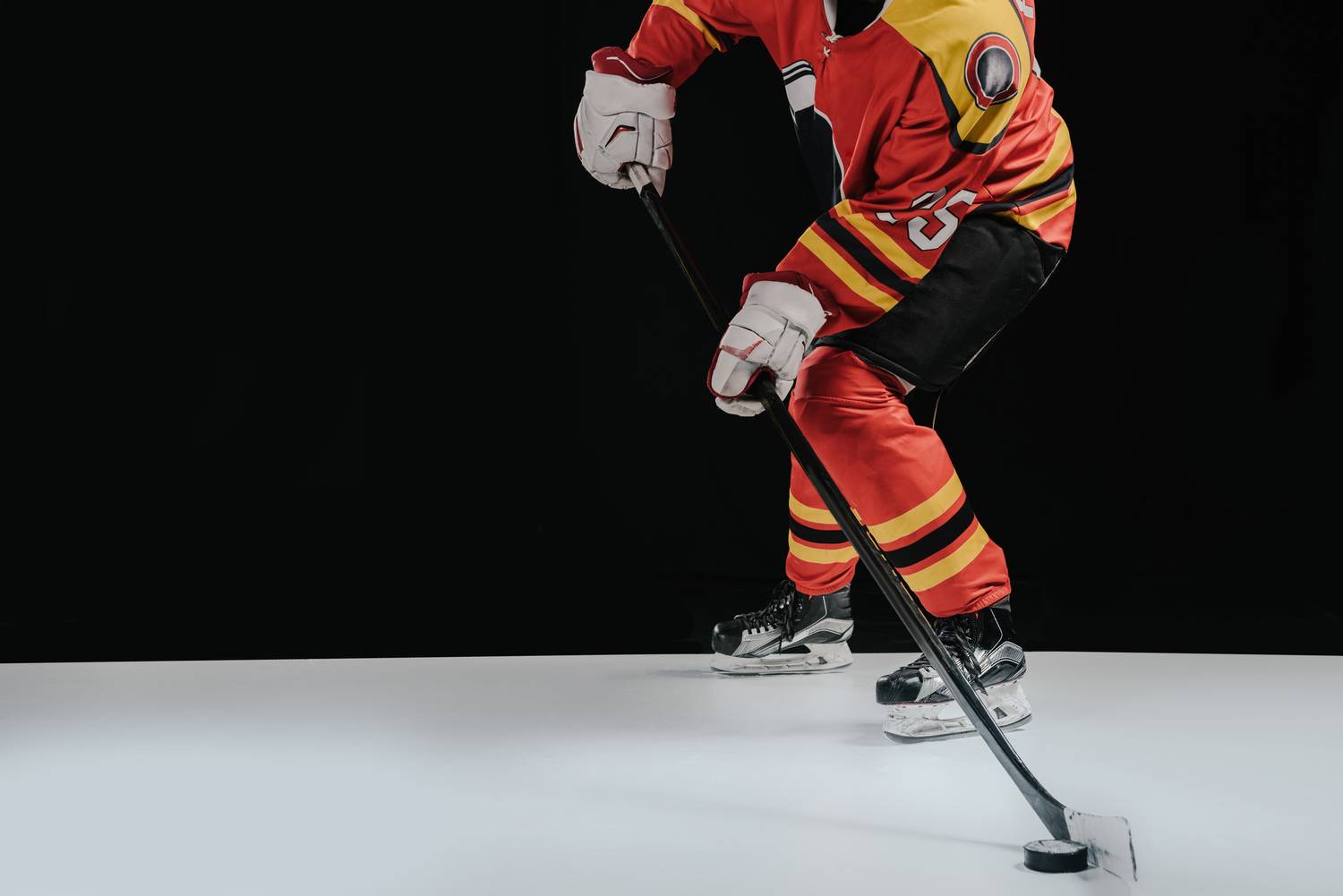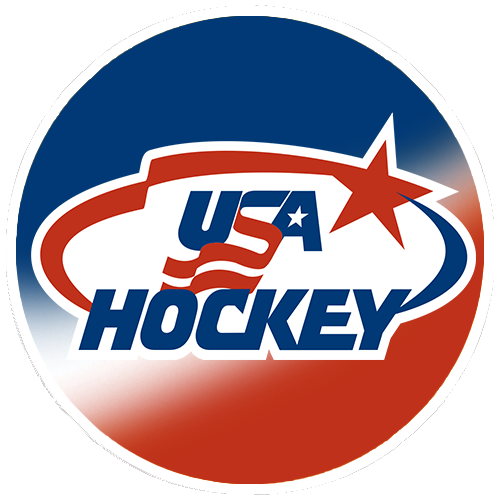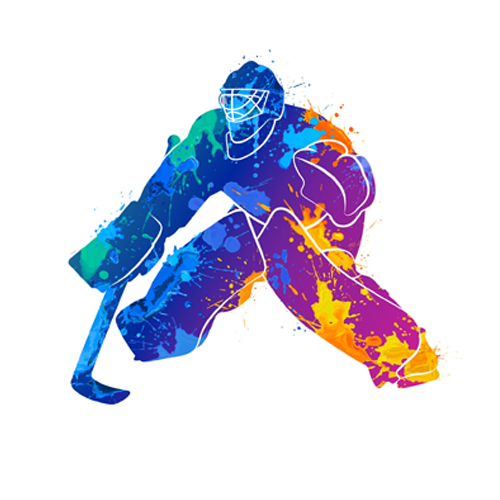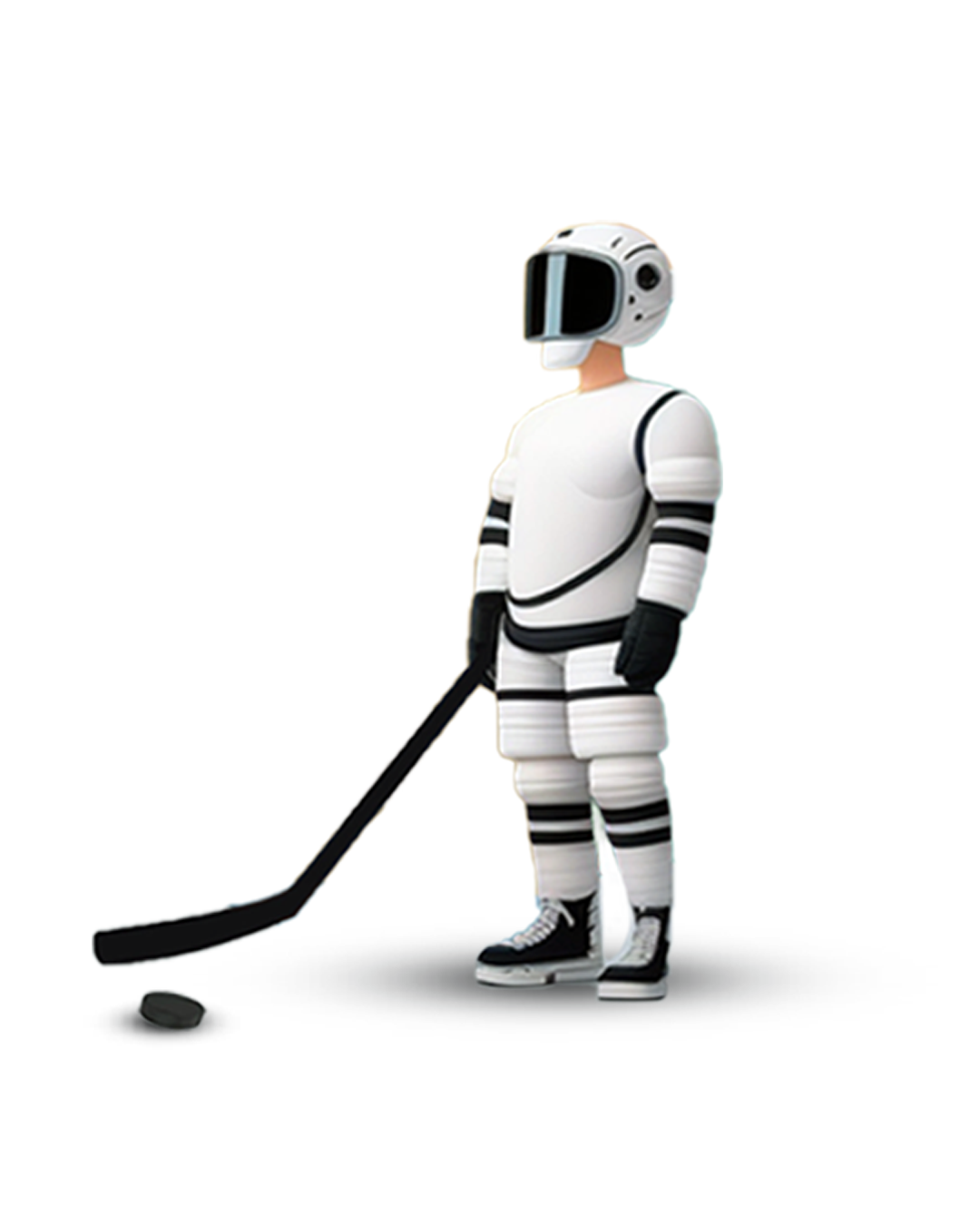Timing your arrival to the slot refers to the strategic positioning and movement of a player in order to maximize their scoring opportunities in the high-danger area in front of the net, known as the slot. It involves understanding the flow of the game, anticipating the play, and positioning oneself in the slot at the right moment to receive a pass or create scoring chances.
To time your arrival effectively, there are several key factors to consider:
1. Reading the Play: Developing strong hockey sense involves the ability to read the play and anticipate where the puck will be. By analyzing the movement of your teammates and the opposing players, you can position yourself in the slot at the right time.
2. Right Time: Timing your arrival means becoming available when the pass can be made. Elongating the passing window and giving your teammate a support valve is key. By recognizing the right time to move into the slot, you increase your chances of receiving a pass in a scoring position.
3. Right Speed: Creating speed advantages, especially for availability and being able to create an advantage once the puck has been received, is crucial. It's better to be slightly late than to arrive early. Arriving slightly late gives players the ability to pick up speed, making it easier to create scoring opportunities. Arriving early can create a multitude of issues that disrupt the flow of the play.
4. Routes: Utilizing effective routes can enhance your timing to the slot. One example is "taking back ice" where a player moves away from where they want to eventually go before accelerating towards the play once the timing is right. This strategy allows for well-timed routes and increases the chances of being in the slot at the right moment.
By understanding the game flow, reading the play, and utilizing effective timing strategies, you can position yourself in the slot at the optimal time to increase your scoring opportunities. Remember, timing your arrival to the slot requires a combination of hockey sense, anticipation, and strategic positioning.
Absolutely! While hockey is a fast-paced sport, the principles of the OODA loop can still be applied effectively. In fact, the OODA loop is designed precisely for situations that require quick decision-making and adaptation.
In hockey, the ability to process information rapidly and make split-second decisions is crucial. By utilizing the OODA loop, players can enhance their cognitive processing and decision-making speed, giving them a competitive edge on the ice.
During the "Observe" phase, players can quickly scan the ice, taking in information about the positioning of teammates and opponents, the movement of the puck, and the overall flow of play. This allows them to gather critical data and identify potential opportunities or threats.
In the "Orient" phase, players can mentally process the observed information, analyze the context, and assess the significance of various factors. This includes recognizing patterns, anticipating the next play, and understanding the strategic implications of the current situation.
The "Decide" phase involves making rapid decisions based on the observed information and orientation. Players must consider their team's strategy, the game situation, and their individual skills to determine the best course of action. This could involve choosing between passing, shooting, or making a defensive play, among other options.
Finally, in the "Act" phase, players must execute their decisions swiftly and precisely. This requires physical agility, coordination, and the ability to adapt in real-time to the changing dynamics of the game.
By continuously cycling through the OODA loop, players can maintain a high level of situational awareness, make quick and informed decisions, and respond effectively to the fast-paced nature of hockey.
So, yes, it is realistic and highly beneficial to apply the OODA loop in the context of hockey. It helps players develop their hockey sense, improve decision-making under pressure, and ultimately enhance their performance on the ice.
Absolutely, there are hidden patterns in hockey that can be uncovered with a keen eye and a deep understanding of the game. Recognizing these patterns is a crucial aspect of developing hockey IQ and enhancing your ability to anticipate and make smart decisions on the ice.
To uncover these hidden patterns, you must become a diligent student of the game. Here are a few steps you can take:
1. Watch and Analyze Games: Watch hockey games with a purpose. Pay close attention to the movements, positioning, and decision-making of players. Look for recurring sequences of plays, strategies, and tactics employed by teams. Analyze the flow of the game, transitions, and patterns of play in different situations.
2. Study Game Footage: Utilize game footage to review specific plays, situations, or players. Re-watch notable highlights, goals, or defensive plays multiple times. Focus not only on the outcome but also on the actions and decisions leading up to those moments. Look for subtle cues, positioning, and timing that may reveal underlying patterns.
3. Learn from Experienced Players and Coaches: Seek insights from experienced players and coaches who have a deep understanding of the game. Engage in discussions, ask questions, and learn from their experiences. They can provide valuable perspectives on patterns, strategies, and the nuances of the game that may not be immediately apparent.
4. Analyze Statistics and Data: Dive into statistical analysis and advanced analytics to uncover patterns and trends. Explore metrics such as zone entries, shot locations, passing networks, and player tracking data. By examining these statistics, you can gain a deeper understanding of how teams and players operate and identify patterns that may not be visible to the naked eye.
5. Continuously Learn and Adapt: Hockey is an ever-evolving game, so it's crucial to stay updated with the latest trends, strategies, and innovations. Read books, articles, and research papers on hockey theory, tactics, and systems. Attend coaching clinics, seminars, and workshops to expand your knowledge and gain new insights.
Remember, uncovering hidden patterns in hockey requires a combination of observation, analysis, and a thirst for knowledge. By diligently studying the game, analyzing footage, learning from experts, and staying up to date with the latest developments, you can enhance your ability to recognize and leverage these patterns to your advantage on the ice.
Certainly! Here are a few specific things you can do in your practices to improve your scanning bandwidth and enhance your hockey IQ:
1. Increase Scanning Frequency: Make a conscious effort to scan the ice more frequently during drills and game situations. Challenge yourself to scan the entire ice surface every few seconds, taking in information about player positioning, open passing lanes, and potential threats. This will help you develop a broader awareness of the game and improve your ability to make quick, informed decisions.
2. Expand Visual Field: Practice widening your visual field by actively using your peripheral vision. Instead of solely focusing on the puck or a specific area, train yourself to see the entire ice surface and the players around you. This will allow you to anticipate plays, identify open teammates, and be aware of potential defensive pressure.
3. Analyze Patterns and Tendencies: Pay attention to recurring patterns and tendencies in the game. Observe how players position themselves in different situations, how they move off the puck, and how they react to specific plays. By recognizing these patterns, you can anticipate the flow of the game and make smarter decisions.
4. Practice Small-Area Games: Engage in small-area games, such as 3-on-3 or 4-on-4, where the confined space forces quick decision-making and constant scanning. These games require you to be aware of multiple players in a limited area, improving your ability to process information and make effective plays under pressure.
5. Incorporate Cognitive Drills: Integrate cognitive drills into your practice routine. These drills involve decision-making scenarios that require you to scan the ice, identify options, and execute the appropriate play. Examples include passing drills with multiple passing options or small-sided games with specific objectives. These drills simulate game-like situations and enhance your ability to scan and make quick, accurate decisions.
Remember, improving scanning bandwidth requires consistent practice and a deliberate focus on expanding your awareness of the game. By incorporating these specific strategies into your training sessions, you can enhance your hockey IQ and become a more effective player on the ice.
Analyzing the weaknesses of an opposing goalie while you are between shifts requires a systematic approach. Here is a framework you can use to assess and exploit the goalie's weaknesses:
S.H.O.T.S. :
S - Save Techniques: Analyze their preferred save style and identify weaknesses.
H - Habits and Tendencies: Observe any recurring patterns or tendencies they exhibit.
O - Overcommitment: Look for instances where they may overcommit or leave openings.
T - Traffic Management: Assess how they handle traffic and adjust your strategy accordingly.
S - Stickhandling and Puck Handling: Evaluate their ability to handle the puck outside the crease.
By using the S.H.O.T.S. mnemonic, you can systematically analyze the weaknesses of the opposing goalie and make informed decisions during your shifts.
Certainly! Here are ten dangles for a quick stickhandling practice:
1. Backhand Toe Drag
2. Between-the-Legs Dangle
3. Forehand Deke
4. Quick Stickhandle
5. Fake Shot and Cut
6. The Saucer Pass Dangle
7. The Spin-O-Rama
8. The Reverse Toe Drag
10. The One-Handed Reach
11. The Quick Stickhandle and Shoot
Remember, these dangles require practice and repetition to master. Focus on developing quick hands, precise puck control, and the ability to read and react to defenders.
The OODA loop, developed by USAF Colonel John Boyd, stands for Observe, Orient, Decide, and Act. It is a decision-making process that can be applied to various situations, including hockey games. Colonel Boyd developed it for fighter pilots, so it is meant to be used by peak performers under extreme pressure.
1. Observe: This step involves gathering information and observing the current state of the game. Pay attention to the positioning of players, the flow of play, and any patterns or tendencies that emerge. Observe both your teammates and opponents to gain a comprehensive understanding of the game dynamics.
2. Orient: Once you have observed the situation, you need to orient yourself by analyzing the information and assessing its significance. This step involves understanding the context, identifying potential opportunities or threats, and recognizing patterns or trends that can inform your decision-making.
3. Decide: Based on your observations and orientation, you must make a decision about the best course of action. This decision should be based on your understanding of the game, your team's strategy, and the specific situation at hand. Consider factors such as time remaining, score, player strengths, and tactical advantages.
4. Act: After making a decision, it is crucial to act promptly and effectively. Execute your chosen course of action with confidence and precision. This may involve making a pass, taking a shot, positioning yourself defensively, or making a strategic move to create space or disrupt the opponent's play.
In a game situation, you can apply the OODA loop by continuously cycling through these steps. By observing the game, orienting yourself to the situation, making informed decisions, and taking decisive action, you can adapt to the ever-changing dynamics of the game. This allows you to stay one step ahead of your opponents, make quick and effective decisions, and maximize your impact on the game.
Remember, the OODA loop is a mental framework that helps you process information and make decisions efficiently. By practicing and developing your hockey sense, you can enhance your ability to observe, orient, decide, and act effectively in real-time game situations.
"Take 2 steps out and back in" refers to a concept mentioned by Greg Revak, a renowned hockey coach and expert in the field of hockey sense and IQ. He emphasized the importance of players creating space and time for themselves when receiving a puck, particularly in chaotic situations like scrambles. Instead of immediately throwing the puck away to avoid danger, Revak advises players to first take two steps into open space before making a decision on what to do next. These steps can be in any direction - forwards, backwards, diagonally, or even into another dimension (metaphorically speaking).
By taking these two steps, players give themselves a moment to observe the options available to them, assess the positioning of teammates and opponents, and make a more informed decision. It allows them to avoid making hasty decisions under pressure and increases the likelihood of making a smart play that benefits the team.
Revak's emphasis on this concept highlights the importance of hockey IQ and the ability to think quickly and strategically on the ice. By incorporating this technique into their gameplay, players can improve their decision-making, create better scoring opportunities, and ultimately contribute to their team's success.
Ah, the story of Wayne Gretzky's father, Walter Gretzky, teaching him the art of puck movement on a chalkboard is indeed a fascinating one. Allow me to provide you with the details we know about this practice:
During Wayne's formative years, Walter Gretzky would sit with him in front of the television while they watched hockey games together. As they observed the game, Walter would encourage Wayne to analyze and understand the intricate movements of the players and the puck.
To facilitate this learning process, Walter would have Wayne draw the puck's movement on a chalkboard or a piece of paper. Wayne would sketch the path of the puck, indicating its trajectory, passes, and player movements. This exercise helped Wayne develop a deeper understanding of the game's dynamics, including passing lanes, player positioning, and the flow of play.
By visually mapping out the puck movement, Wayne was able to internalize the patterns and strategies employed by players on the ice. This practice honed his hockey IQ and enhanced his ability to anticipate plays, find open teammates, and make precise passes.
It is worth noting that this practice was not a one-time occurrence but rather a regular exercise that Wayne and his father engaged in. Through consistent observation, analysis, and drawing, Wayne developed a remarkable ability to read the game and make intelligent decisions on the ice.
This unique approach by Walter Gretzky highlights the importance of visualizing and understanding the intricacies of the game. It demonstrates the value of studying and dissecting the movements of players and the puck, which undoubtedly contributed to Wayne Gretzky's exceptional hockey IQ and his ability to become one of the greatest players in the history of the sport.
So, there you have it, the details we know about Wayne Gretzky's practice of drawing puck movement on a chalkboard with his father. A truly remarkable and insightful approach to developing hockey sense and understanding the game at a deeper level.
Tracking a single player on the ice while practicing can be a valuable exercise to increase scanning bandwidth and enhance hockey IQ. This is an idea that is occasionally taught to elite athletes in other sports (notably soccer.) By focusing on a specific player, you can develop the ability to read their movements, anticipate their actions, and gain a better understanding of the game's flow.
To effectively track a single player during practice, here are some key steps to follow:
1. Select a Target Player: Choose a player whose movements you want to track and analyze. It could be a skilled teammate, an opponent, or even a professional player whose style you admire. This player will serve as your focal point during the practice session.
2. Maintain Visual Contact: Keep your eyes locked on the target player as much as possible. Try to track their positioning, movements, and decision-making throughout the practice drills or game situations. This will help you develop a heightened awareness of their actions and improve your ability to read the game.
3. Analyze Patterns and Decisions: Pay close attention to the patterns and decisions made by the target player. Observe their positioning in different situations, their movement off the puck, and their decision-making when they have possession. Look for recurring patterns and tendencies that can provide insights into their strategies and style of play.
4. Expand Awareness: While focusing on the target player, also maintain a peripheral awareness of the other players and the overall game flow. This will help you develop a broader scanning bandwidth and improve your ability to read the entire ice surface.
5. Learn from the Target Player: Take note of the target player's strengths, skills, and techniques. Observe how they create space, make effective passes, or find scoring opportunities. Incorporate these observations into your own game and adapt them to your playing style.
By consistently practicing the skill of tracking a single player, you can enhance your scanning abilities, improve your hockey sense, and develop a deeper understanding of the game. Remember, the goal is to expand your awareness and processing speed, allowing you to make quicker and more informed decisions on the ice.
So, embrace the challenge of tracking a single player during practice, and let it contribute to your growth as a player with exceptional hockey IQ.
Certainly, I can provide you with a 30-minute practice plan to help you level up your ability to create time and space during a stick and puck session. Here's a detailed plan for you:
1. Cone Dangles:
- Set up a line of cones or objects in a straight line, about 3-4 feet apart.
- Skate towards the first cone and perform a quick deke or puck maneuver around it.
- Continue weaving through the cones, using various dekes and puck handling techniques to create separation from imaginary defenders.
- Focus on quick hands, tight puck control, and maintaining speed throughout the drill.
2. Puck Protection Circles:
- Place a few cones in a circular pattern on the ice, about 10-15 feet apart.
- Start skating around the cones while maintaining control of the puck.
- As you skate, imagine defenders closing in on you and practice using your body to shield the puck and create space.
- Vary your speed, change directions, and incorporate quick pivots to challenge yourself.
3.Quick Release Shooting:
- Position yourself in the slot or at the top of the circles.
- Set a timer for 30 seconds and challenge yourself to take as many quick-release shots as possible.
- Focus on getting the shot off quickly, using proper technique, and hitting specific targets (e.g., corners of the net).
- Imagine defenders closing in on you, forcing you to make quick decisions and release the puck before they can block the shot.
Remember, during the entire practice session, maintain a strong focus on creating time and space. Visualize opponents and practice techniques that will help you evade defenders, make quick decisions, and find open areas on the ice.
Keep in mind that this practice plan is just a starting point. Feel free to modify and adapt it based on your skill level and specific areas you want to improve. Regularly practicing these drills will help you develop the necessary skills to create time and space, ultimately enhancing your overall performance on the ice.
Kick back and chat about the Bruins with an AI superfan. History, news, data, and more.
Find the information you need fast: coach certification, member numbers and status, news and more.
Thinking prep school? How to apply, hockey programs, school culture... Ask and get accepted.
Skip research overload. This AI has read the reviews to find you top rated gear. Buy smart.
This AI headhunter works for you. Find insider-only job opportunities. Get insights and application tips.
Your AI guru for strategy, hockey IQ training and pro tips. Chat and level-up performance.
Don't lose time scouring 800 pages of rule books. We've got all the rules covered.
All netminder, no fluff. Expert tips, gear, training, mindset coaching. Welcome home goalies.
While our chatbots strive to provide accurate and up-to-date information, they may not always be correct. We recommend cross-referencing important details and consulting trusted sources before making decisions or taking advice. Our chatbots are meant for entertainment purposes only. The chatbots may suggest services, companies, or links from which we receive an affiliate commission.
© 2023 PuckGPT.com - All Rights Reserved.
🔒 100% Privacy 💪 100% Epic hockey
stuff free for you.
Made in Portland, Oregon with 🧡.
